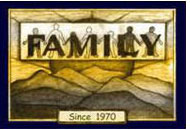The Safe Harbour Program is pleased to announce we will be hosting “Internet Awareness: Tools for Keeping Youth Safe in Cyberspace” on Thursday, December 1st from 6-8:30pm at Ulster County Community College’s Quimby Auditorium. The event is free of charge and open to the public. Information about Safe Harbour and the importance of Cybersafety is below.
Thank you for your time and we hope to see you there!
The NYS Safe Harbour for Exploited Children Act was the first law in the nation recognizing that youth below the age of 18 who have been subjected to commercial sexual exploitation and/or labor trafficking are survivors of trafficking, not perpetrators of crime. The two main goals of the Safe Harbour Act are to remove youth from the jurisdiction of the criminal justice and juvenile delinquency systems and divert them to comprehensive services such as safe, long-term housing, medical and psychological care, transportation, legal advocacy, educational and vocational counseling, and life skills.
Our Safe Harbour Program is tasked with raising awareness that trafficking occurs throughout New York State and to educate service providers and professionals about Safe Harbour law, high risk populations, associated red flags, and how to engage youth in conversations about trafficking. Our Outreach Program provides prevention education and links at-risk and exploited youth to services as needed.
On Cybersafety:
According to a study titled, “2014 Teens and the Screen study: Exploring Online Privacy, Social Networking and Cyberbullying,” 87% of youth have witnessed cyberbullying versus 2013 when 27% of youth witnessed cruel behavior online.Additionally, an increase in cases of suicide have been attributed to sexts gone viral.
While 79% of youth have never used the Internet or social media to reinvent themselves, one in three youth feel more accepted on social media than they do in real life. Traffickers utilize social media sites such as Facebook to groom and lure youth into trafficking situations via tactics such as fraud (promises of a romantic relationships or lucrative employment offers) and coercion (threats to the life of the survivor and their family). Thorn, an agency that studies technology’s role in sex trafficking, found that 70 percent of their surveyed child sex trafficking survivors were, at some point, sold online.
It is imperative, whether we have sons, daughters, nieces, nephews, grandchildren or youth we interact with and care for in various settings, to remain informed on this topic and share this opportunity on December 1st, 2016 with friends, family, colleagues, and anyone invested in ensuring our youth’s safety.



